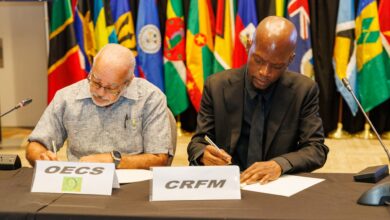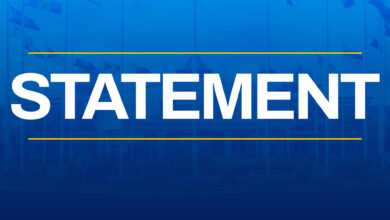Since 2005, the world has experienced dramatic increases in the prices of many staple foods. Indeed, in the first three months of 2008, international food prices of all major food commodities reached their highest level in nearly 30 y.
In addition, the price of fertilizers rose about 85 percent between 2007 and early 2008 in most low income countries. Projections suggest that food prices are likely to remain high in the next few years and will probably not retreat to the pre-2008 level. This is borne out by the current high world market prices for wheat caused by drought in Russia and floods in Pakistan. So this crisis situation appears likely to endure in the medium to long term.
In this Region, the factors affecting food security have been well documented. They include:
• Declines in productivity of land, labour and management in the agricultural sector resulting in a weakened capacity to supply food competitively;
• Declines in earnings from traditional crops resulting in a reduced ability to purchase food;
• The erosion and threatened loss of trade preferences for traditional export crops, the earnings of which are utilized to purchase imported food;
• The very high dependence on imported food and the uncertainty of food arrival associated with events such as the September 11 incidents in the USA;
• The increasing incidence of pockets of poverty in many countries, implying that portions of the population have difficulty in accessing sufficient food; and
• Concerns over the association of the high use of imported foods and the growing incidence in the Region of food related diseases such as obesity, hypertension, cancer and diabetes.
An effective policy framework for regional food and nutrition security to address these concerns will require agreement on the following issues that are set out in the draft document:
1. The main gaps and constraints that limit food security effectiveness in terms of food availability, access, utilisation and stability in the short, medium and long term, as well as the opportunities and comparative advantages that we may enjoy;
2. Key policy actions and investment programs and projects to move CARICOM Member States towards self reliant food and nutrition security within the next 15 years;
3. Concrete regional actions (policies and programmes) that will complement national actions to achieve food security in the Region;
4. Institutional framework, needs and capacity gaps for effective Food Security Monitoring, Evaluation and Learning at national and regional levels – we need to have an efficient, effective and reliable Regional Food Security Information System;
5. The implementation strategy as well as the respective roles and functions of the interested parties (government and regional bodies, civil society, farmers, traders etc.) and the institutional framework to facilitate action.
As the Assistant Secretary General has observed, we must ensure that the Regional Policy for Food and Nutrition Strategy (RPFNS) does not share the fate of previous such attempts and end up in the dustbin of history. To achieve this end, it is of paramount importance that the policy has a broad constituency of support throughout the Region, grounded in a shared perception (by civil society and governments) of the cost-effectiveness and national interest for each Member State of implementing the regional and national programmes envisaged within its framework.
All CARICOM Member States are committed to promoting a favourable policy environment for the achievement of food and nutrition security. However, in small island states like ours, there is a limit to what can be done at the national level to enhance food and nutrition security. Small populations and land masses in the small island Member States, complementary natural resource bases, as well as distances from other Caribbean countries and trading partners, place a premium on joint strategic planning to exploit economies of scale and ensure the achievement of the basic elements of food and nutrition security – food availability, access, utilization, and stability.
In fact, the RPFNS seeks to highlight how diverse forms and types of value-added collective action at the regional level could complement national and sub-national interventions and serve as a catalyst to meet consensual food security goals in the CARICOM region. To this end, it is essential that national policy formulators, farmers, consumers, and all other stakeholders be aware of the elements of national food and nutrition security that need to be addressed at regional level.
National Consultations in each Member State are the foundations of this process. They will provide the opportunity to fashion recommendations from a broad range of stakeholders, for a programme of actions to be taken at national and regional levels to implement the RPFNS, firmly anchored within the framework provided by this Regional Policy.
As the ASG has just pointed out, the process is thus the key to ensuring that the actions contemplated in the policy are indeed carried out and that the policy does not remain a list of good intentions! For the issues are multi-sectoral and require coordinated action across a broad front: agriculture, health and nutrition, works and infrastructure, finance and the economy, trade and industry, education and information. But it must be done if the Region is to achieve the goals it has set itself of food availability, household access, nutritional adequacy (consumption/biological utilization and care practices) and the stability of the three components.
I shall end here by emphasising how important this policy framework is for external donor agencies and technical assistance agencies such as FAO. In the wake of the 2008 food price crisis and increasing climatic volatility, the major bilateral and multilateral donors as well as international financing institutions such as the IDB, IFAD and the World Bank have revised their programmes in support of agricultural development to place them in a food and nutrition security framework.
The RPFNS is the key to tapping these external sources of financial and technical assistance. Indeed its importance is heightened by the fact that, because of the high transaction costs involved in dealing with such issues on a national basis with a large group of small island states such as exist in this Region, external financial assistance and technical support are more likely to be forthcoming (and more cost-effective) in the context of a regional approach.
FAO will certainly be revising its Regional Medium-Term Priority Framework (RMTPF), which is the Organization’s tool for jointly identifying strategic areas for FAO assistance to achieving national and regional food and agricultural development objectives, in light of the priorities set in the RPFNS. We look forward to working together with the CARICOM Secretariat and the Member States over the next few months in the process of preparing the action programme through which the RPFNS objectives will be achieved.





